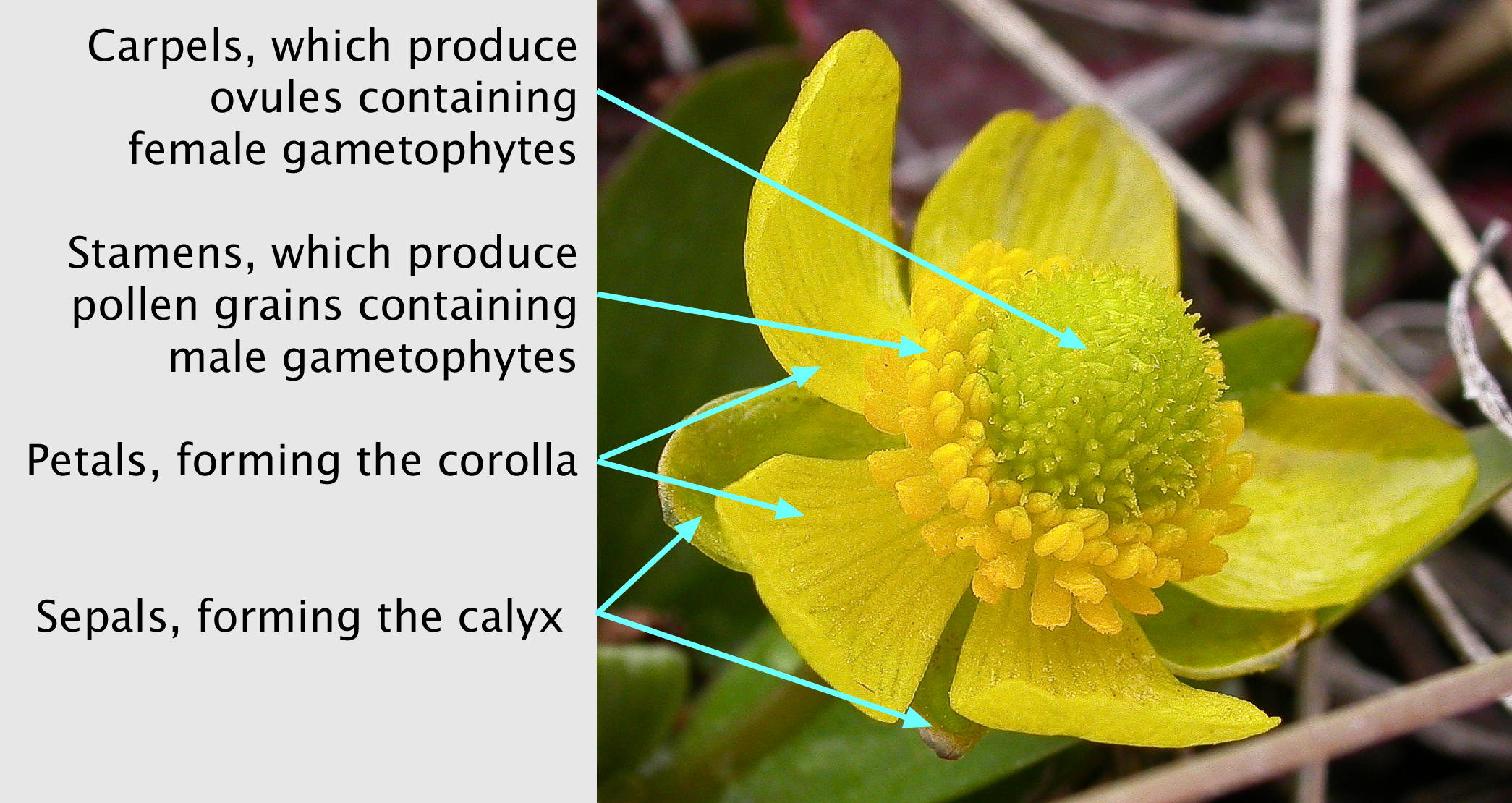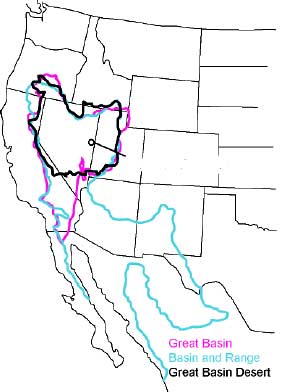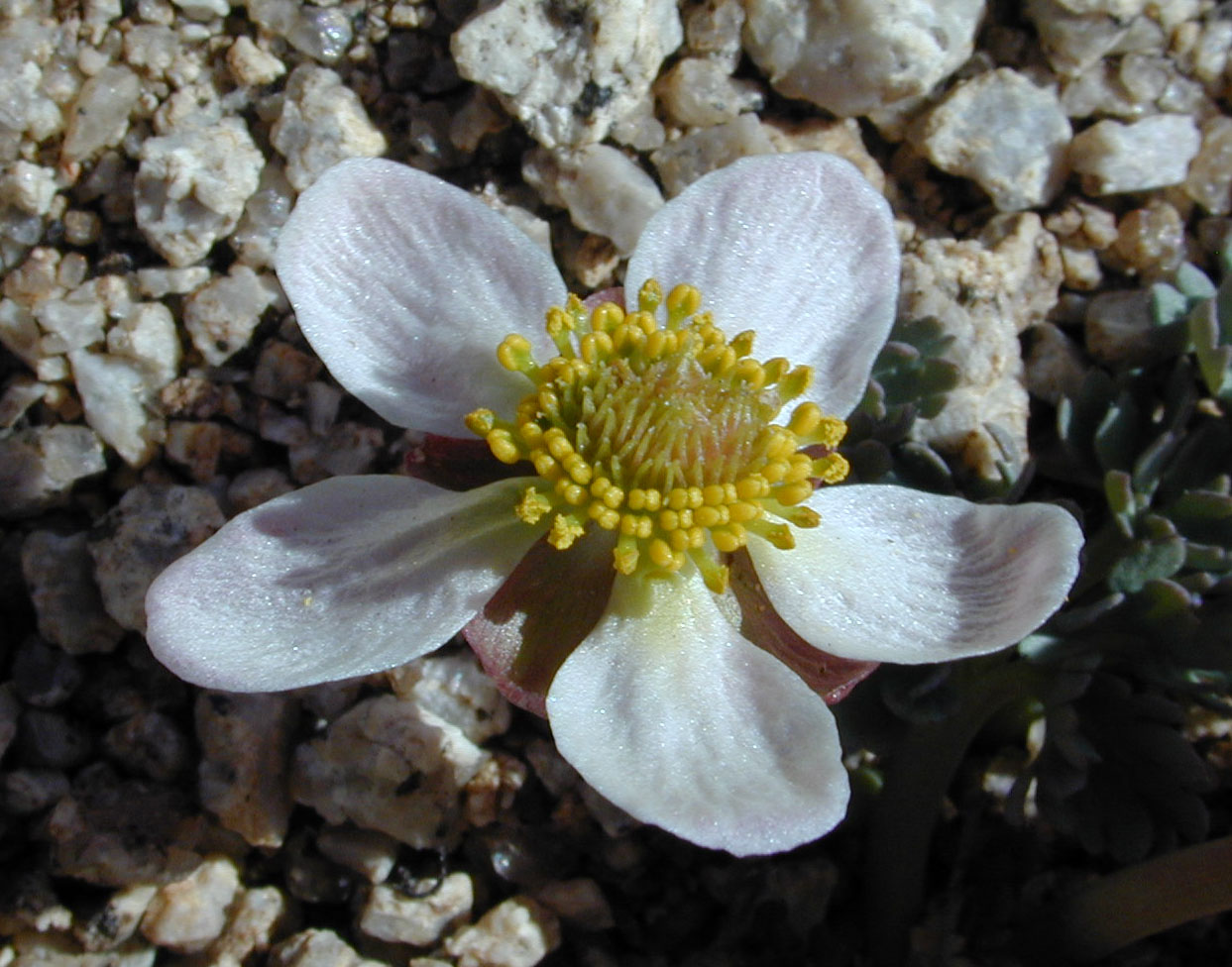|
Beckwithia Andersonii
''Ranunculus andersonii'' is a species of buttercup known by the common name Anderson's buttercup. It is native to the western United States, including the Great Basin and surrounding regions, where it grows in sagebrush, woodlands, and other habitat. It is a perennial herb producing a basal rosette of thick leaves which are each divided into three double-lobed leaflets at the end of a petiole. The inflorescence arises from the rosette on an erect, leafless stalk usually no more than 20 centimeters tall. It bears one flower with usually five white or red-tinged petals each up to 2 centimeters long with white or pinkish sepals at the base. At the center of the flower are many yellow stamens and pistils. The fruit is an achene, borne in a spherical cluster of 14 or more. It was named after Charles Lewis Anderson by Asa Gray Asa Gray (November 18, 1810 – January 30, 1888) is considered the most important American botanist of the 19th century. His ''Darwiniana'' was co ... [...More Info...] [...Related Items...] OR: [Wikipedia] [Google] [Baidu] |
Asa Gray
Asa Gray (November 18, 1810 – January 30, 1888) is considered the most important American botanist of the 19th century. His '' Darwiniana'' was considered an important explanation of how religion and science were not necessarily mutually exclusive. Gray was adamant that a genetic connection must exist between all members of a species. He was also strongly opposed to the ideas of hybridization within one generation and special creation in the sense of its not allowing for evolution. He was a strong supporter of Darwin, although Gray's theistic evolution was guided by a Creator. As a professor of botany at Harvard University for several decades, Gray regularly visited, and corresponded with, many of the leading natural scientists of the era, including Charles Darwin, who held great regard for him. Gray made several trips to Europe to collaborate with leading European scientists of the era, as well as trips to the southern and western United States. He also built an extensive ... [...More Info...] [...Related Items...] OR: [Wikipedia] [Google] [Baidu] |
Ranunculus
''Ranunculus'' is a large genus of about almost 1700 to more than 1800 species of flowering plants in the family Ranunculaceae. Members of the genus are known as buttercups, spearworts and water crowfoots. The genus is distributed in Europe, North America and South America. The familiar and widespread buttercup of gardens throughout Northern Europe (and introduced elsewhere) is the creeping buttercup '' Ranunculus repens'', which has extremely tough and tenacious roots. Two other species are also widespread, the bulbous buttercup '' Ranunculus bulbosus'' and the much taller meadow buttercup '' Ranunculus acris''. In ornamental gardens, all three are often regarded as weeds. Buttercups usually flower in the spring, but flowers may be found throughout the summer, especially where the plants are growing as opportunistic colonizers, as in the case of garden weeds. The water crowfoots (''Ranunculus'' subgenus ''Batrachium''), which grow in still or running water, are sometimes ... [...More Info...] [...Related Items...] OR: [Wikipedia] [Google] [Baidu] |
United States
The United States of America (U.S.A. or USA), commonly known as the United States (U.S. or US) or America, is a country primarily located in North America. It consists of 50 U.S. state, states, a Washington, D.C., federal district, five major unincorporated territories, nine United States Minor Outlying Islands, Minor Outlying Islands, and 326 Indian reservations. The United States is also in Compact of Free Association, free association with three Oceania, Pacific Island Sovereign state, sovereign states: the Federated States of Micronesia, the Marshall Islands, and the Palau, Republic of Palau. It is the world's List of countries and dependencies by area, third-largest country by both land and total area. It shares land borders Canada–United States border, with Canada to its north and Mexico–United States border, with Mexico to its south and has maritime borders with the Bahamas, Cuba, Russia, and other nations. With a population of over 333 million, it is the List of ... [...More Info...] [...Related Items...] OR: [Wikipedia] [Google] [Baidu] |
Great Basin
The Great Basin is the largest area of contiguous endorheic watersheds, those with no outlets, in North America. It spans nearly all of Nevada, much of Utah, and portions of California, Idaho, Oregon, Wyoming, and Baja California. It is noted for both its arid climate and the basin and range topography that varies from the North American low point at Badwater Basin in Death Valley to the highest point of the contiguous United States, less than away at the summit of Mount Whitney. The region spans several physiographic divisions, biomes, ecoregions, and deserts. Definition The term "Great Basin" is applied to hydrographic, biological, floristic, physiographic, topographic, and ethnographic geographic areas. The name was originally coined by John C. Frémont, who, based on information gleaned from Joseph R. Walker as well as his own travels, recognized the hydrographic nature of the landform as "having no connection to the ocean". The hydrographic definition is the ... [...More Info...] [...Related Items...] OR: [Wikipedia] [Google] [Baidu] |
Sagebrush
Sagebrush is the common name of several woody and herbaceous species of plants in the genus '' Artemisia''. The best known sagebrush is the shrub '' Artemisia tridentata''. Sagebrushes are native to the North American west. Following is an alphabetical list of common names for various species of the genus ''Artemisia'', along with their corresponding scientific name. Many of these species are known by more than one common name, and some common names represent more than one species. * Alpine sagebrush—' * African sagebrush—'' Artemisia afra'' * Basin sagebrush—'' Artemisia tridentata'' * Big sagebrush—see Basin sagebrush * Bigelow sagebrush—'' Artemisia bigelovii'' * Birdfoot sagebrush—''Artemisia pedatifida'' * Black sagebrush—'' Artemisia nova'' * Blue sagebrush—see Basin sagebrush * Boreal sagebrush—''Artemisia norvegica'' * Budsage—'' Artemisia spinescens'' * California sagebrush—'' Artemisia californica'' * Carruth's sagebrush—''Artemisia carruthii ... [...More Info...] [...Related Items...] OR: [Wikipedia] [Google] [Baidu] |
Petiole (botany)
In botany, the petiole () is the stalk that attaches the leaf blade to the stem, and is able to twist the leaf to face the sun. This gives a characteristic foliage arrangement to the plant. Outgrowths appearing on each side of the petiole in some species are called stipules. Leaves with a petiole are said to be petiolate, while leaves lacking a petiole are called sessile or apetiolate. Description The petiole is a stalk that attaches a leaf to the plant stem. In petiolate leaves, the leaf stalk may be long, as in the leaves of celery and rhubarb, or short. When completely absent, the blade attaches directly to the stem and is said to be sessile. Subpetiolate leaves have an extremely short petiole, and may appear sessile. The broomrape family Orobanchaceae is an example of a family in which the leaves are always sessile. In some other plant groups, such as the speedwell genus '' Veronica'', petiolate and sessile leaves may occur in different species. In the grasses ( Poacea ... [...More Info...] [...Related Items...] OR: [Wikipedia] [Google] [Baidu] |
Inflorescence
An inflorescence is a group or cluster of flowers arranged on a stem that is composed of a main branch or a complicated arrangement of branches. Morphologically, it is the modified part of the shoot of seed plants where flowers are formed on the axis of a plant. The modifications can involve the length and the nature of the internodes and the phyllotaxis, as well as variations in the proportions, compressions, swellings, adnations, connations and reduction of main and secondary axes. One can also define an inflorescence as the reproductive portion of a plant that bears a cluster of flowers in a specific pattern. The stem holding the whole inflorescence is called a peduncle. The major axis (incorrectly referred to as the main stem) above the peduncle bearing the flowers or secondary branches is called the rachis. The stalk of each flower in the inflorescence is called a pedicel. A flower that is not part of an inflorescence is called a solitary flower and its stalk ... [...More Info...] [...Related Items...] OR: [Wikipedia] [Google] [Baidu] |
Sepal
A sepal () is a part of the flower of angiosperms (flowering plants). Usually green, sepals typically function as protection for the flower in bud, and often as support for the petals when in bloom., p. 106 The term ''sepalum'' was coined by Noël Martin Joseph de Necker in 1790, and derived . Collectively the sepals are called the calyx (plural calyces), the outermost whorl of parts that form a flower. The word ''calyx'' was adopted from the Latin ,Jackson, Benjamin, Daydon; A Glossary of Botanic Terms with their Derivation and Accent; Published by Gerald Duckworth & Co. London, 4th ed 1928 not to be confused with 'cup, goblet'. ''Calyx'' is derived from Greek 'bud, calyx, husk, wrapping' ( Sanskrit 'bud'), while is derived from Greek 'cup, goblet', and the words have been used interchangeably in botanical Latin. After flowering, most plants have no more use for the calyx which withers or becomes vestigial. Some plants retain a thorny calyx, either dried or live, ... [...More Info...] [...Related Items...] OR: [Wikipedia] [Google] [Baidu] |
Stamen
The stamen (plural ''stamina'' or ''stamens'') is the pollen-producing reproductive organ of a flower. Collectively the stamens form the androecium., p. 10 Morphology and terminology A stamen typically consists of a stalk called the filament and an anther which contains '' microsporangia''. Most commonly anthers are two-lobed and are attached to the filament either at the base or in the middle area of the anther. The sterile tissue between the lobes is called the connective, an extension of the filament containing conducting strands. It can be seen as an extension on the dorsal side of the anther. A pollen grain develops from a microspore in the microsporangium and contains the male gametophyte. The stamens in a flower are collectively called the androecium. The androecium can consist of as few as one-half stamen (i.e. a single locule) as in ''Canna'' species or as many as 3,482 stamens which have been counted in the saguaro (''Carnegiea gigantea''). The androecium in va ... [...More Info...] [...Related Items...] OR: [Wikipedia] [Google] [Baidu] |
Gynoecium
Gynoecium (; ) is most commonly used as a collective term for the parts of a flower that produce ovules and ultimately develop into the fruit and seeds. The gynoecium is the innermost whorl of a flower; it consists of (one or more) '' pistils'' and is typically surrounded by the pollen-producing reproductive organs, the stamens, collectively called the androecium. The gynoecium is often referred to as the " female" portion of the flower, although rather than directly producing female gametes (i.e. egg cells), the gynoecium produces megaspores, each of which develops into a female gametophyte which then produces egg cells. The term gynoecium is also used by botanists to refer to a cluster of archegonia and any associated modified leaves or stems present on a gametophyte shoot in mosses, liverworts, and hornworts. The corresponding terms for the male parts of those plants are clusters of antheridia within the androecium. Flowers that bear a gynoecium but no stamens are c ... [...More Info...] [...Related Items...] OR: [Wikipedia] [Google] [Baidu] |
Achene
An achene (; ), also sometimes called akene and occasionally achenium or achenocarp, is a type of simple dry fruit produced by many species of flowering plants. Achenes are monocarpellate (formed from one carpel) and indehiscent (they do not open at maturity). Achenes contain a single seed that nearly fills the pericarp, but does not adhere to it. In many species, what is called the "seed" is an achene, a fruit containing the seed. The seed-like appearance is owed to the hardening of the fruit wall (pericarp), which encloses the solitary seed so closely as to seem like a seed coat. Examples The fruits of buttercup, buckwheat, caraway, quinoa, amaranth, and cannabis are typical achenes. The achenes of the strawberry are sometimes mistaken for seeds. The strawberry is an accessory fruit with an aggregate of achenes on its outer surface, and what is eaten is accessory tissue. A rose produces an aggregate of achene fruits that are encompassed within an expanded hypanthium ... [...More Info...] [...Related Items...] OR: [Wikipedia] [Google] [Baidu] |
Charles Lewis Anderson
Charles Lewis Anderson was an American medical doctor who, in addition to the practice of medicine, made important contributions to fields of natural history, especially botany. Educated in Indiana, he spent most of his professional life in the upper Midwest and West (Hennepin Co., Minnesota; Carson City, NV; and Santa Cruz, CA). Many plants collected by him were subsequently named in his honor. He wrote about local natural history, and actively engaged in public service in places where he resided. Biographical He was born in Roanoke County, Virginia September 27, 1827. His family relocated to Morgan County, Indiana, when he was 10, and his further education took place in that state. He attended Franklin College and DePauw University (known, then, as Indiana Asbury University), and obtained his medical credentials from the latter in 1852. He then spent 10 years engaged in medical practice in Hennepin County, Minnesota. In 1862 he relocated to Carson City, Nevada (to be joined ... [...More Info...] [...Related Items...] OR: [Wikipedia] [Google] [Baidu] |
.jpg)







